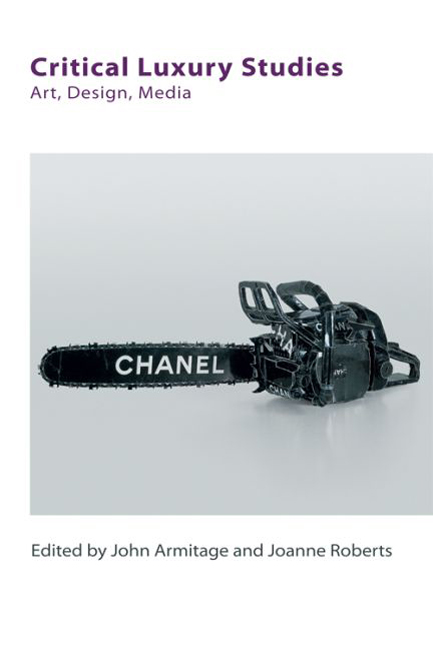Book contents
- Frontmatter
- Contents
- List of Figures
- List of Tables
- Series Editors’ Preface
- Acknowledgements
- Notes on Contributors
- 1 Critical Luxury Studies: Defining a Field
- I CRITICAL LUXURY STUDIES
- 2 Knowing Luxury: From Socio-Cultural Value to Market Price?
- 3 Luxury: A Dialectic of Desire?
- 4 The Luxury Duality: From Economic Fact to Cultural Capital
- 5 ‘Life's Little Luxuries?’ The Social and Spatial Construction of Luxury
- 6 The Object and Art of Luxury Consumption
- II ART, DESIGN, MEDIA
- Index
6 - The Object and Art of Luxury Consumption
from I - CRITICAL LUXURY STUDIES
Published online by Cambridge University Press: 23 September 2017
- Frontmatter
- Contents
- List of Figures
- List of Tables
- Series Editors’ Preface
- Acknowledgements
- Notes on Contributors
- 1 Critical Luxury Studies: Defining a Field
- I CRITICAL LUXURY STUDIES
- 2 Knowing Luxury: From Socio-Cultural Value to Market Price?
- 3 Luxury: A Dialectic of Desire?
- 4 The Luxury Duality: From Economic Fact to Cultural Capital
- 5 ‘Life's Little Luxuries?’ The Social and Spatial Construction of Luxury
- 6 The Object and Art of Luxury Consumption
- II ART, DESIGN, MEDIA
- Index
Summary
A central aspect of luxury is value. Luxuries proclaim value: they suggest things that can readily be valued above others. Luxuries embody the promise of special things: not merely things of quality, scarcity and wonder that are beautifully made, but also eventful and sensory fulfilling experiences. Indeed, some luxury goods are deliberately made to be noticed: to embody authority and announce their experiential dimension. It is this power of luxuries to offer more, to hold out the promise of a process of familiarisation which unfolds new aesthetic and sensory dimensions, that can evoke strong and even threatening social feelings about their exclusiveness, social cost and wastefulness. The making of luxuries can involve a seemingly excessive investment of time and money, beyond apparent social need. The distinction between everyday necessities and luxuries is generally seen as central to the understanding of luxury. The dynamic of modernity is regarded as one in which many luxuries whose consumption was formerly restricted to aristocrats, courtiers and upper-class groups, become widely available (tea, sugar, spices, silk, dyes, etc.). In pre-modern times luxury goods were generally prohibitively expensive and only available in limited quantities until European colonial expansion, the development of the slave trade and the opening up of the Americas increased both the supply and the range of substitutes. This resulted in price falls, opening up the possibility of more widespread availability and the ‘democratisation of luxury’. One of the dynamics of luxury, then, is to produce copies and cheaper substitutes to extend the market. But this tendency also produces the opposite move, which is at the heart of luxury, the concern to possess the original, which has unique qualities and rarity.
From another perspective anything can become an indulgence, desirable or pleasing: hence anything can become a luxury. People may well have different hierarchies of goods and experiences they value at particular times of life, and hence a range of different luxuries they can enjoy or desire. These may range from the ‘little luxuries’, the little treats mothers provide, to lottery-winner dreams of fulfilment and enjoyment replete with the finest things money can buy.
- Type
- Chapter
- Information
- Critical Luxury StudiesArt, Design, Media, pp. 108 - 128Publisher: Edinburgh University PressPrint publication year: 2016



